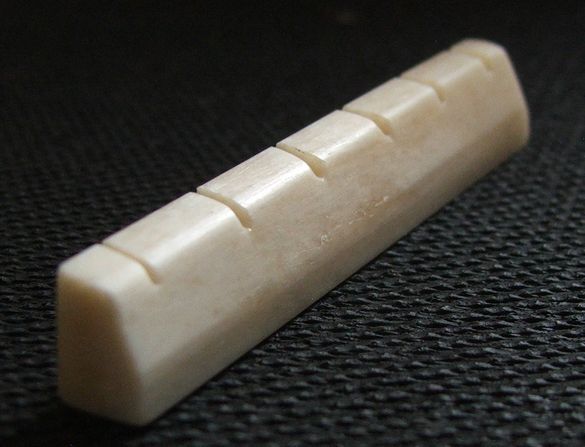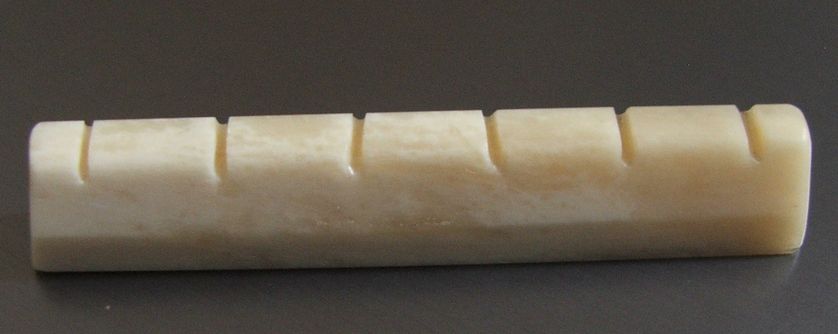The quest for perfection continues. I decided that I should rather try wider string spacing, and made up another nut, streamlining the process, but still without decent nut files. I widened the spacing to about 42.5 mm, and the guitar plays well with that.
The next item would, of course, be a bone saddle. The improvement is arguable, since the saddle rests on a piezo strip, and not on the bridge itself. I made up one from Eland bone picked up in the veld, the bone having been exposed to the weather for at least four months. It is hard, but will flake off easily. Started to go "off" already. I made up the saddle to duplicate the original's (the notched one in the photo) string height. Playing indicated lack of, well, imagination. A "dull" sound, without the "ping" to the trebles. Whether this is due to the material I cannot say, but I measured the action to be in the steel string category, which might be too low. The guitar has a smaller body depth than what is found in "pure" acoustics, and that does influence the sound, but the sound with this saddle was unacceptable.
I made up another bone saddle from the same cow bone as used on the nut, this being much fresher, as well as a bit "underdeveloped", bone density-wise. I lifted the action back to the Low end of nylon string settings, in this case about 0.7 mm. I also increased the saddle thickness, to be a better fit in the bridge.
With the higher strings (and increased break-over angle and increased leverage on the top, etc.) the guitar has a stronger sound, the strings "sing" and the tone is "full". Much more pleasing, but the action is noticeably harder. Playability suffers, but then, if the instrument does not satisfy acoustically, why play? We all know this thing is full of compromises. I shall try it for a while, and see if I shave off the saddle by 0.5 mm or so.
Interesting thing, this guitar, stringed with Thomastik-Infeld Classic S KR116 rope cores, has good intonation at fret 12, only 3 - 4 cent flat. I suspected lifting the saddle will sharpen that, it does, slightly, but still not bad. They did a good job on designing these strings. Seems the 6th string goes slightly sharp now, but making up a saddle with offsets dedicated to this set of strings is futile, I am not planning to make up a saddle for every set I fit, unless I change to another type of string.

